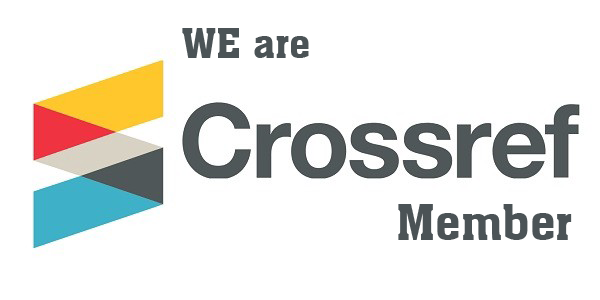Impact of water pollution with Heavy Metals on sea bream fishes) Sparus Aurata) Health in Marriott Valley
DOI:
https://doi.org/10.54172/xet3jg35Keywords:
Sea bream, ammonia, heavy metals, antioxidantsAbstract
This research was conducted in the outskirts of Alexandria City, in Lake Marriott between December 2021 and June 2022. Samples of water and sea bream fish were brought from a fish farm. Through analysis of water and fish samples, it became clear that the water samples were poor due to the presence of high levels of ammonia and heavy metal such as cadmium and lead. And it resulted in stress for the fish and it was evident by the analysis of antioxidants that consider biological indicators of the lack of water and soil quality in which the fish live.
References
1. J. Tariq, M. Ashraf, M. Jaffar, M. Afzal, Pollution status of the Indus River, Pakistan, through heavy metal and macronutrient contents of fish, sediment and water. Water research 30, 1337 (1996).
2. R. A. Goyer, Toxic and essential metal interactions. Annual review of nutrition 17, 37 (1997).
3. GAFRD. (General Authority for Fish Resources Development Cairo, 2012).
4. EEAA, “Alexandria Integrated Coastal Zone Management Project (AICZMP), Environmental and Social Impact Assessment ” (Arab Republic of Egypt, Ministry of State for Environmental Affairs, Egyptian Environmental Affairs Agency, 2009).
5. A. R. Sprocati et al., Investigating heavy metal resistance, bioaccumulation and metabolic profile of a metallophile microbial consortium native to an abandoned mine. Science of the total environment 366, 649 (2006).
6. B. Akinsanya, I. O. Ayanda, A. O. Fadipe, B. Onwuka, J. K. Saliu, Heavy metals, parasitologic and oxidative stress biomarker investigations in Heterotis niloticus from Lekki Lagoon, Lagos, Nigeria. Toxicology Reports 7, 1075 (2020).
7. G. Nussey, van Vuren, JHJ, H. du Preez, Bioaccumulation of chromium, manganese, nickel and lead in the tissues of the moggel, Labeo umbratus (Cyprinidae), from Witbank Dam, Mpumalanga. Water Sa 26, 269 (2000).
8. R. Cruickshank, J. Duguid, B. Marmion, R. Swian, Medical Microbiology (Churchill Livingstone, New York, 1975), vol. 11, pp. 585.
9. M. K. Stoskopf, Fish medicine. (No Title) (W. B.Saunders Co, , Philadelphia 1993).
10. L. Tort, P. Torres, The effects of sublethal concentrations of cadmium on haematological parameters in the dogfish, Scyliorhinus canicula. Journal of Fish Biology 32, 277 (1988).
11. M. J. Taras, Standard methods for the examination of water and wastewater. (American Public Health Association:
, New York, N. Y., 1971. , ed. 13 Th Edition. , 1971).
12. M. L. Jackson, Soil chemical analysis: advanced course. (UW-Madison Libraries parallel press, 2005).
13. W. Fresenius, K. E. Quentin, W. Schneider, in Water Analysis: A Practical Guide to Physico-Chemical, Chemical and Microbiological Water Examination and Quality Assurance. (Springer, 1988), pp. 1-70.
14. W. E. Federation, A. Association, Standard methods for the examination of water and wastewater. American Public Health Association (APHA): Washington, DC, USA 21, (2005).
15. FAO., The state of food and agriculture 2001. (Food & Agriculture Org., 2001).
16. A. Altındağ, S. Yiğit, Assessment of heavy metal concentrations in the food web of lake Beyşehir, Turkey. Chemosphere 60, 552 (2005).
17. A. Atta, R. B. Voegborlo, E. S. Agorku, Total mercury distribution in different tissues of six species of freshwater fish from the Kpong hydroelectric reservoir in Ghana. Environmental monitoring and assessment 184, 3259 (2012).
18. P. Tawari-Fufeyin, A. Egborge, Heavy Metals of Ikpoba River, Benin City, Nigeria. Tropical Freshwater Biology 7, 27 (1998).
19. F. Oguzie, Heavy metals in fish, water and effluents of lower Ikpoba River in Benin, Nigeria Pak. J. Sci ind. Res 46, 156 (2003).
Downloads
Published
Issue
Section
License

This work is licensed under a Creative Commons Attribution-NonCommercial 4.0 International License.
Copyright of the articles Published by Al-Mukhtar Journal of Basic Sciences (MJBS) is retained by the author(s), who grant MJBS a license to publish the article. Authors also grant any third party the right to use the article freely as long as its integrity is maintained and its original authors and cite MJSc as the original publisher. Also, they accept the article remains published by the MJBS website (except in the occasion of a retraction of the article).












